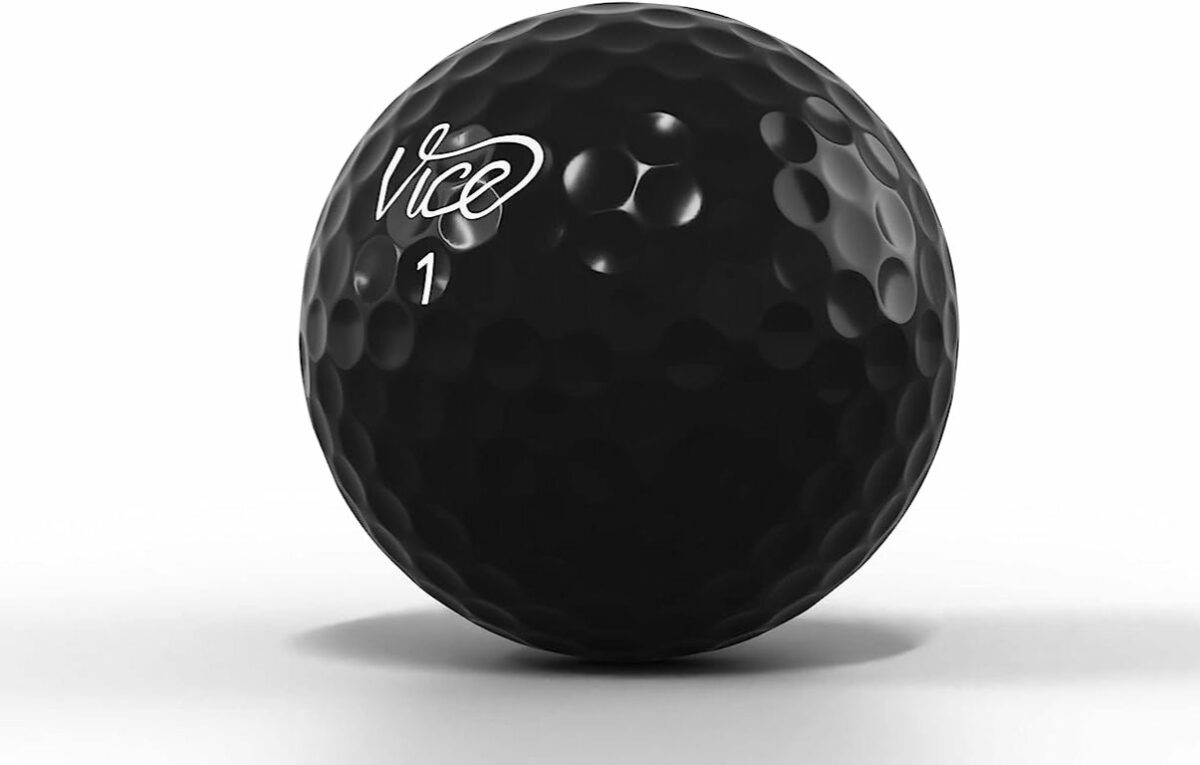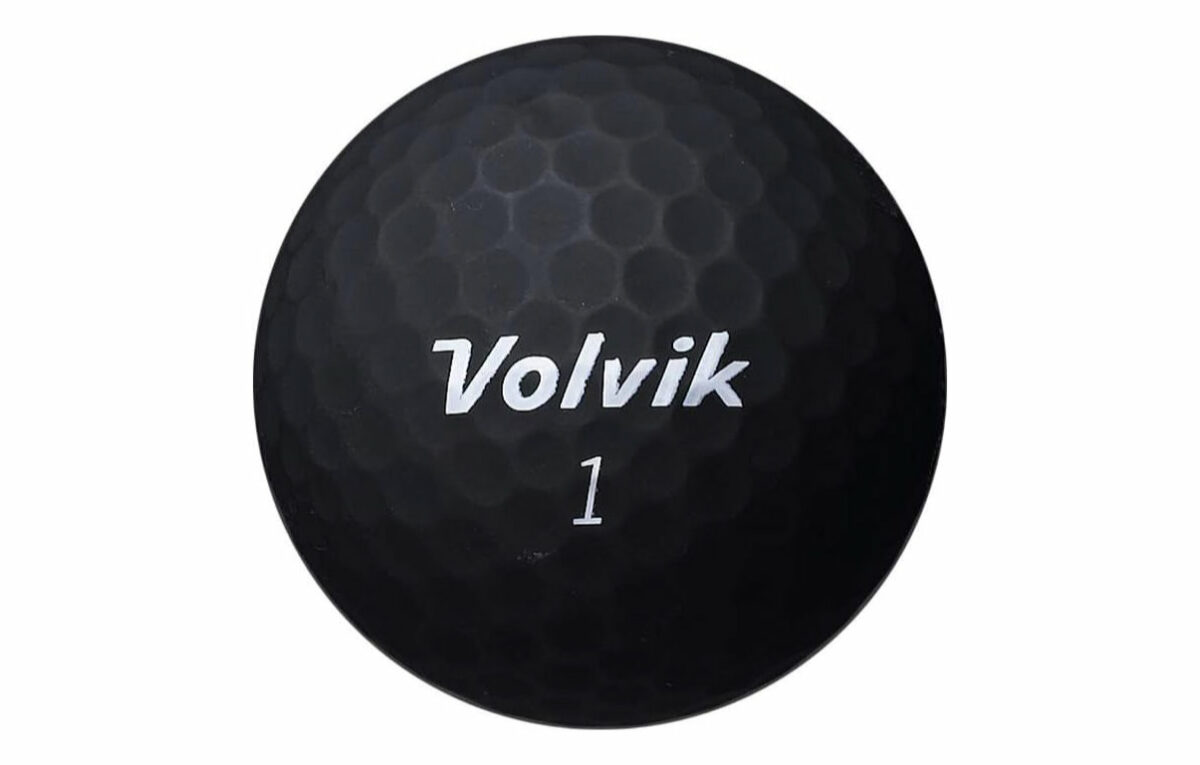Are Black Golf Balls Hard to Find?
Black golf balls have seen a surge in popularity in recent years thanks to companies like Volvik, Vice, and Cut Golf offering matte and glossy black options.
The unique, non-traditional appearance attracts golfers seeking to stand out on the course.
But with black golf balls becoming more prevalent, how well do they actually perform? Specifically, are black balls difficult to see and find compared to white models?
In this in-depth guide, we’ll examine the visibility of black golf balls across various course conditions.
I’ll also offer tips to help make black balls more visible. Let’s dispel myths about black balls being impossible to spot so you can confidently incorporate this unique aesthetic into your game.

Black Ball Visibility Against Various Backgrounds
When hit into the rough, fairway, bunkers, or sky, black golf balls provide contrast against most settings:
- Rough/Fairway – Black pops against green grass and dirt. Easier to spot than white in some cases.
- Bunkers – Dark color contrasts well in both light and dark sand traps.
- Sky – Black disappears against dark clouds but is easy to pick up against blue sky.
- Trees – Can be tricky to spot if the ball settles under dark foliage.
Overall, black balls remain reasonably easy to find across most common course backgrounds. The dark color actually aids visibility in some instances.
Visibility of Black vs. White Golf Balls
In a direct comparison, black golf balls offer differences in visibility compared to traditional white models:
- Tee Shots – Black stands out clearly against green grass off the tee. No visibility issues.
- Fairway Shots – Roughly equal visibility to white when sitting up in the fairway.
- Approaches – Black disappears momentarily against dark greenside bunkers or backdrops.
- Chipping – Black shows up well on short chips around the green.
- Putting – Easy to track black ball rolls on the putting surface.
So while black balls can momentarily be trickier to spot against some darker backgrounds on approach shots, they still offer decent overall visibility similar to white models across most situations.
Tips for Making Black Golf Balls More Visible
If concerned about losing track of black balls during play, there are some useful tips to make them stand out more:
- Play matte finish – Matte blacks show up better than glossy models on all shots.
- Lime green/pink colors – Vivid colors like green and pink on logos help visibility.
- Fluorescent colors – Models with fluorescent labels are easier to spot.
- Follow the flight path – Keeping your eye on the full ball flight prevents losing track.
- Spot specific landmarks – Note background objects as reference points to pinpoint landing zones.
- Play when sunny – Bright sun illuminates black balls better than overcast days.
With some minor adjustments and extra focus, black golf balls provide reasonable visibility without major drawbacks in playability.
When Black Golf Balls Perform Best
While visible across most settings, black golf balls optimize visibility in certain optimal conditions:
- Bright, sunny days – The sun’s glare helps black balls stand out when illuminated.
- Open, sparse rough – Black shows up well against thinner grass with more dirt exposure.
- Bermuda grass – Dark balls contrast sharply on light green Bermuda fairways and rough.
- Desert courses – Jet black pops against tan and brown dirt and bunkers.
- Dormant grass – Black balls really stand out once cool season grass goes dormant.
- Light sand bunkers – Dark colors work best in white or light tan traps.
Capitalizing on these ideal situations ensures black balls perform at their highest visibility during play.

When to Exercise Caution with Black Balls
There are certain course conditions that can make black golf balls more challenging to spot:
- Overcast, cloudy days – Low light dulls the contrast and illumination of dark balls.
- Dense rough – Thick grass obscures black balls more than lighter models.
- Lush fairways – Similarly, very green, thick fairways hide black balls.
- Dark bunkers – Black disappears more in shadows of dark brown traps.
- Faded grass – Dormant yellowed grass provides low contrast for black balls.
- Fall/winter – Faded foliage and dead leaves can obscure black on the ground.
- Mountain courses – High elevation rough and slopes already make balls harder to spot.
Being cautious with black balls when these low visibility conditions are present ensures you don’t lose more balls than desired.
Tips for Finding Black Golf Balls
If you do hit a wayward black ball under poor visibility circumstances, here are some handy tips for recovering it more quickly:
- Watch the entire flight – Keeping your eye on the ball in flight gives you its exact landing area.
- Note background references – Trees, bunkers, hills around landing zones provide clues on the ball’s location.
- Enlist help of playing partners – Having others watch the ball can provide multiple perspectives.
- Use reflective markers – Some black balls feature reflective side stamps to shine when illuminated.
- Try a beeper – Intelligent beeper golf balls like Sensor Balls help locate lost black balls.
- Bring a flashlight – For extreme cases, a bright flashlight can illuminate black balls in dark rough.
With some added diligence, black golf balls remain reasonably findable across all playing conditions.
Are Black Golf Balls Legal for Tournament Play?
Provided they meet standardized golf ball specifications outlined by the USGA and The R&A, black golf balls are completely legal for tournament and professional play:
- Weight – Must not exceed 1.620 ounces.
- Size – Minimum diameter 1.680 inches.
- Spherical Symmetry – Must be symmetrical and aerodynamically uniform.
- Initial Velocity – Maximum allowed is 250 feet per second.
- Overall Distance – Total distance capability must conform to limits.
Black colors and matte finishes themselves do not violate any rules. As long as black golf balls satisfy technical requirements, they are tournament legal and conforming.
Black Golf Ball Options Lead the Way
Some notable leading black golf ball models making them a visible trend include:
- Vice Pro Plus – Matte black finish provides great visibility and a non-glare surface.
- Volvik Vivid – Highly popular matte black colorway along with gloss options.
- Bridgestone e12 Lady – Fluorescent accents aid visibility on and around the greens.
- Titleist Pro V1, Pro V1x – Special play numbers make it tour’s #1 ball in black.
- Srixon Soft Feel – Bright side stamp and alignment aid optimize visibility.
- Wilson Triad – Glossy black exterior maintains excellent playability.
- Snell MTB Black – Stylish jet-black appearance with great flight characteristics.
Rather than novelty items, today’s black golf balls offer legitimate performance and quality for golfers seeking a unique style.
Are Black Golf Balls Right for You?
Black golf balls don’t inherently compromise visibility or playability versus traditional white models. With some adjustments and smart course management, they remain readily findable across most conditions.
Factors like your playing partners, typical course conditions, and personal preference regarding ball flight visibility can dictate if black balls suit your game.
But for golfers seeking to stand out with a unique style while maintaining strong performance, black golf ball options keep expanding.
If the cool, sleek aesthetics of black models appeal to you, consider incorporating them into the bag.
Just be smart about when and where you play them based on the tips and advice outlined here. With the right expectations, black golf balls can be the perfect fit and become a visible part of your golf game.
